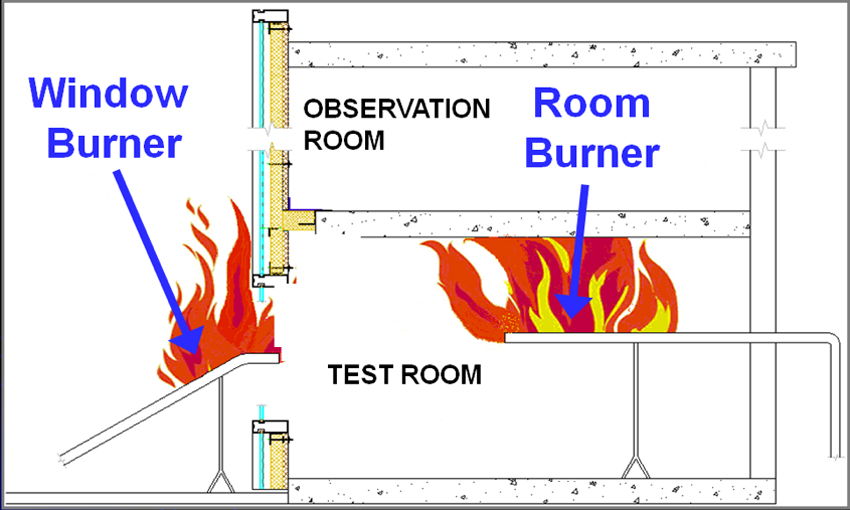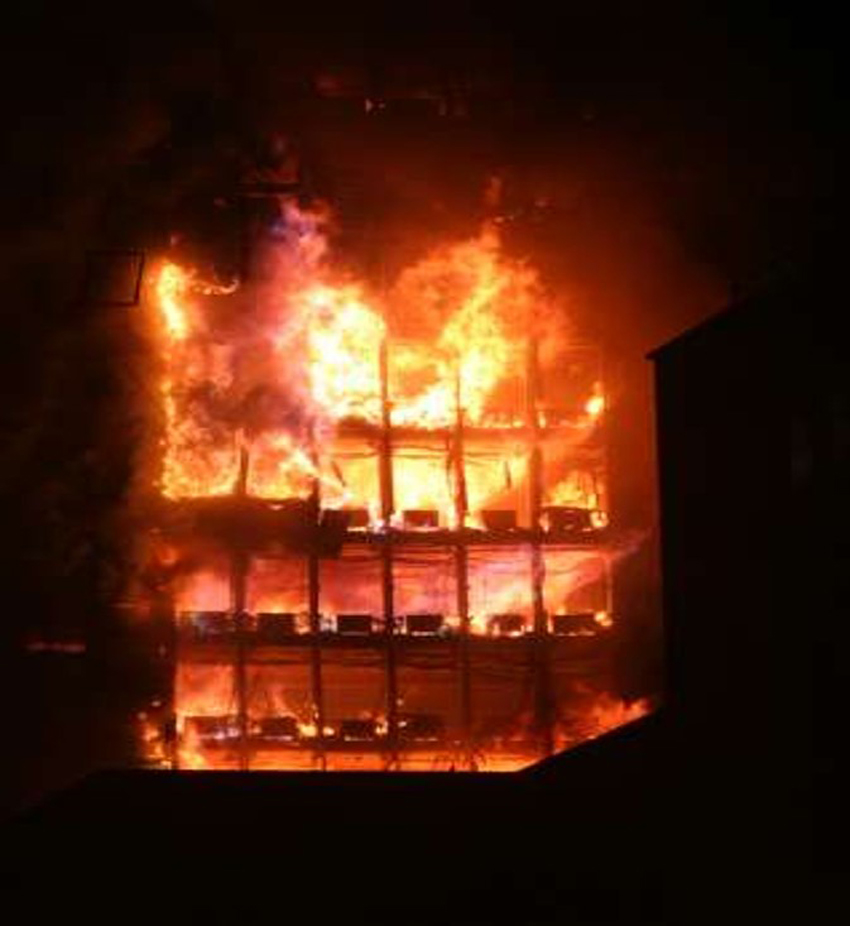Successful Perimeter Fire Containment
Five Common Misconceptions about PFC systems
Now that you understand the critical design criteria for design and installation of PFC systems, let’s look at common misconceptions about PFC. These misconceptions relate to common design and installation errors as well as recent trends in zero-spandrel or all-vision glass assemblies and the increasing popularity of unitized curtain walls with back pans. Both of these create a unique and challenging firestopping condition that must be addressed.
Misconception #1: Mineral wool is mineral wool; any type and manufacturer of mineral wool can be used in PFC systems.
A common misconception is that all types of mineral wool provide the same level of fire-resistive characteristics. As long as you have the correct density and thickness of mineral wool, the PFC system will perform and provide the required level of fire protection. However, this is not true.
There is more to the manufacturing of mineral wool than simply melting rocks. In fact, mineral wool manufacturers have patented technology around the equipment that transforms molten lava material (slag and natural occurring rock) into fiber, as well as proprietary formulations in rock/slag and binder chemistries that produce specific performance attributes. For example, some mineral wool products are designed purely for thermal and moisture performance, while other formulations enhance the material’s acoustical attributes and are ideal for applications where sound attenuation is key. Still other chemistries are developed for industrial applications such as insulating ovens and kilns.
Although all mineral wool products are made of raw materials that make them noncombustible, one cannot assume that a product designed for sound control will provide the level of fire protection needed for a structural column subjected to rigorous fire conditions.
Similarly, an industrial 4-inch-thick, 4-pcf-density mineral wool insulation will not provide the same level of fire protection as curtain wall or safing insulation in a UL/Intertek tested and classified PFC system. The components of a PFC system must be able to withstand direct flame impingement and temperatures greater than 1,800 degrees Fahrenheit while maintaining their structural integrity. This underscores the importance of specifying PFC systems that utilize mineral wool that has been tested, verified, and marked by the independent third-party laboratories specific to ASTM E 2307.
Misconception #2: The ASTM E119 exception, allowed in the IBC, can be used in lieu of a tested and listed system tested to ASTM E2307.
Some curtain wall manufacturers offer designs that feature either short spandrels or no spandrels at all (only vision glass). Until recently, these designs presented a special problem for firestopping. Section 715.4 of the IBC states that the void created between the rated floor assembly and nonrated exterior wall must be sealed with an approved system, tested to ASTM E2307, which remains securely in place for the time period equal to the fire-resistance rating of the floor assembly. As was mentioned earlier, an exception in this same code section addresses assemblies where vision glass extends to the finished floor level. This section allows the interior void to be sealed with an approved material tested to ASTM E119, which shows it is capable of staying in place and preventing fire to spread through the safe-off area.
At the time this exception was adopted into the code, there were no listed systems with either all vision glass or vision glass extending down to the floor level that had been tested to ASTM E2307. Today, there are.
Specifiers should always utilize a system that has been tested to ASTM E2307 since this test more closely represents the conditions of a real fire. Recall that ASTM E2307 exposes the assembly to fire on both sides at the same time for the 2- or 3-hour period of the fire test. In contrast, ASTM E119 exposes fire to only one side of the system and does not represent an expected fire scenario in a high-rise building.

Shown is the intermediate scale multistory test apparatus used in the ASTM E2307 fire-resistance test.

Notice the flame height attacking the exterior on The Windsor high-rise in Madrid, Spain, that was destroyed by fire in 2005.









